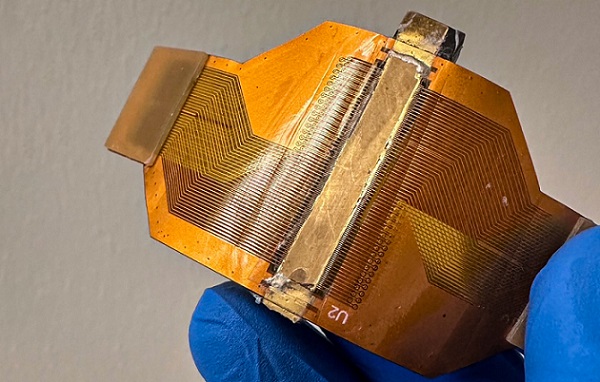Wearable Ultrasound Sticker Helps Identify Early Signs of Acute Liver Failure
Posted on 12 Feb 2024
Human body tissues and organs naturally stiffen with age, and this process can be more pronounced in certain diseases, indicating a potential decline in health. Clinicians currently use ultrasound elastography to measure organ stiffness. This technique, akin to ultrasound imaging, involves a technician using a handheld probe over the skin to send sound waves into the body. These waves cause slight vibrations in internal organs, generating returning waves. The probe detects these vibrations, and their pattern is translated into a measure of the organ's stiffness. Ultrasound elastography is mainly utilized in intensive care units to monitor post-transplant patients, allowing technicians to check the new organ for signs of stiffening, acute failure, or rejection. However, continuous long-term monitoring isn’t feasible with this method, creating a risk of missing critical changes. Now, an ultrasound sticker previously developed to image deep tissues and organs could offer a more continuous, wearable alternative.
Engineers at MIT (Cambridge, MA, USA) have developed a small ultrasound sticker, roughly the size of a postage stamp, capable of monitoring deep internal organ stiffness. When worn on the skin, this sticker can detect signs of diseases like liver and kidney failure or the progression of solid tumors. The sticker emits sound waves that penetrate the skin and reflect off internal organs, with the returning wave patterns indicating organ rigidity. The team has successfully demonstrated that the sticker can continuously monitor organ stiffness for up to 48 hours, detecting subtle changes indicative of disease progression. In early experiments, the sensor identified signs of acute liver failure in rats.

Currently, the engineers are modifying the sticker’s design for human application. They are collaborating with clinicians to adapt the sticker for use in ICU patients recovering from organ transplants. The design is expected to remain largely unchanged for this application, with the sticker attaching to a patient's skin. Sound waves sent and received by the sticker can be processed by connected electronics, similar to EKG machines. The team also aims to develop a more portable, self-contained version of the sticker, incorporating all necessary electronics and processing into a larger patch. This advancement could enable patients to wear the sticker at home for extended periods, continuously monitoring conditions like the progression of solid tumors, which tend to harden as they worsen.
“When some organs undergo disease, they can stiffen over time,” said Xuanhe Zhao, professor of mechanical engineering at MIT. “With this wearable sticker, we can continuously monitor changes in rigidity over long periods of time, which is crucially important for early diagnosis of internal organ failure.”
“We believe this is a life-saving technology platform,” Zhao added. “In the future, we think that people can adhere a few stickers to their body to measure many vital signals, and image and track the health of major organs in the body.”
Related Links:
MIT






 Guided Devices.jpg)







